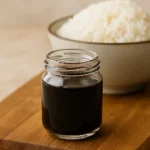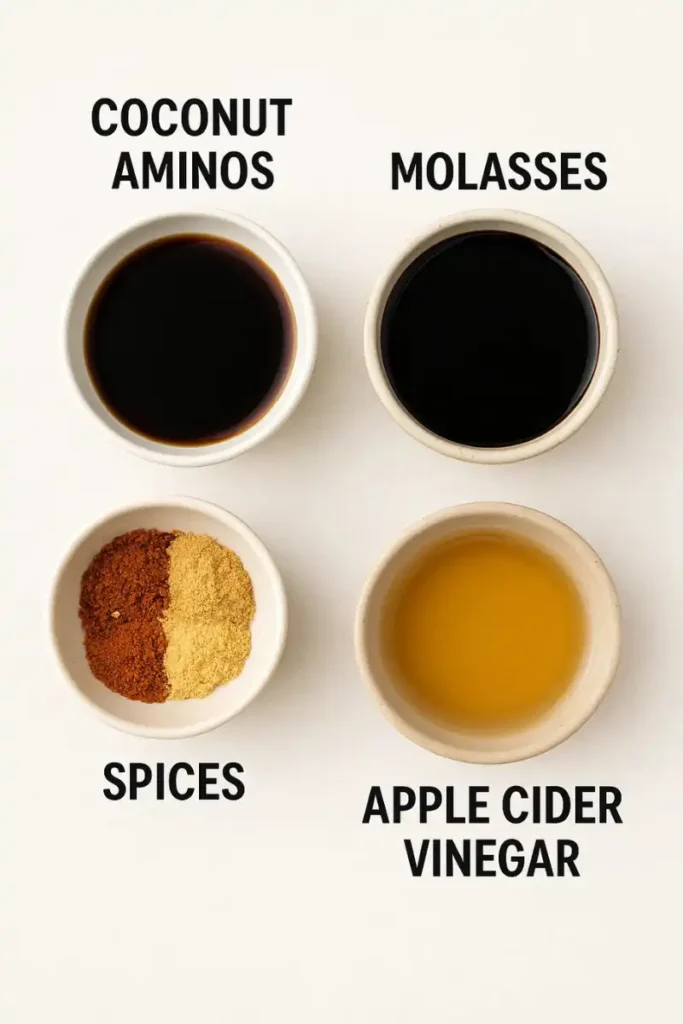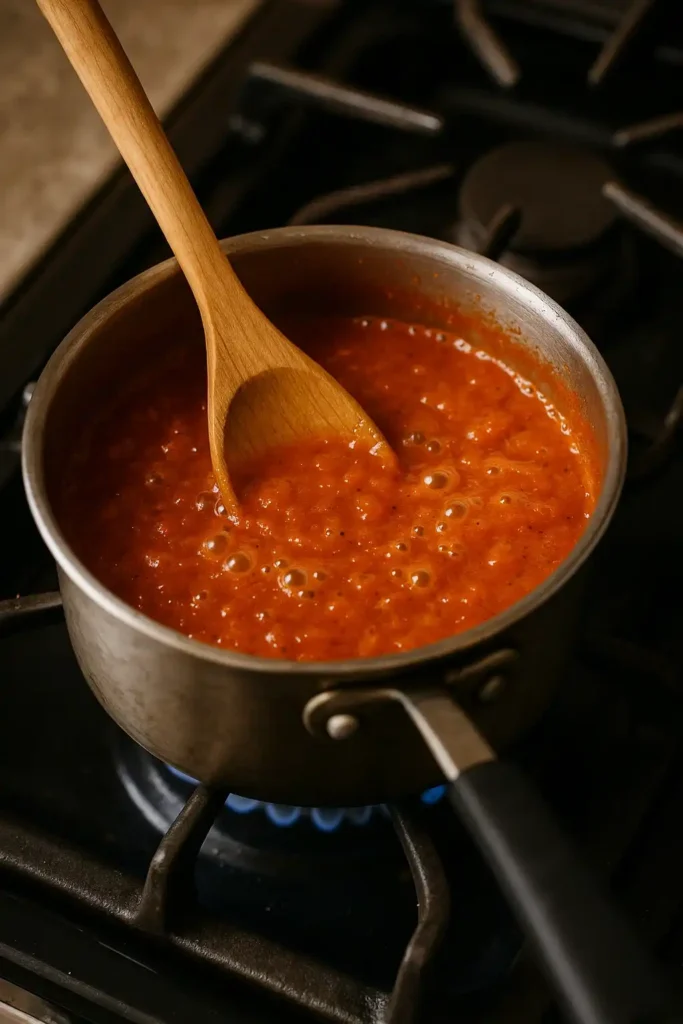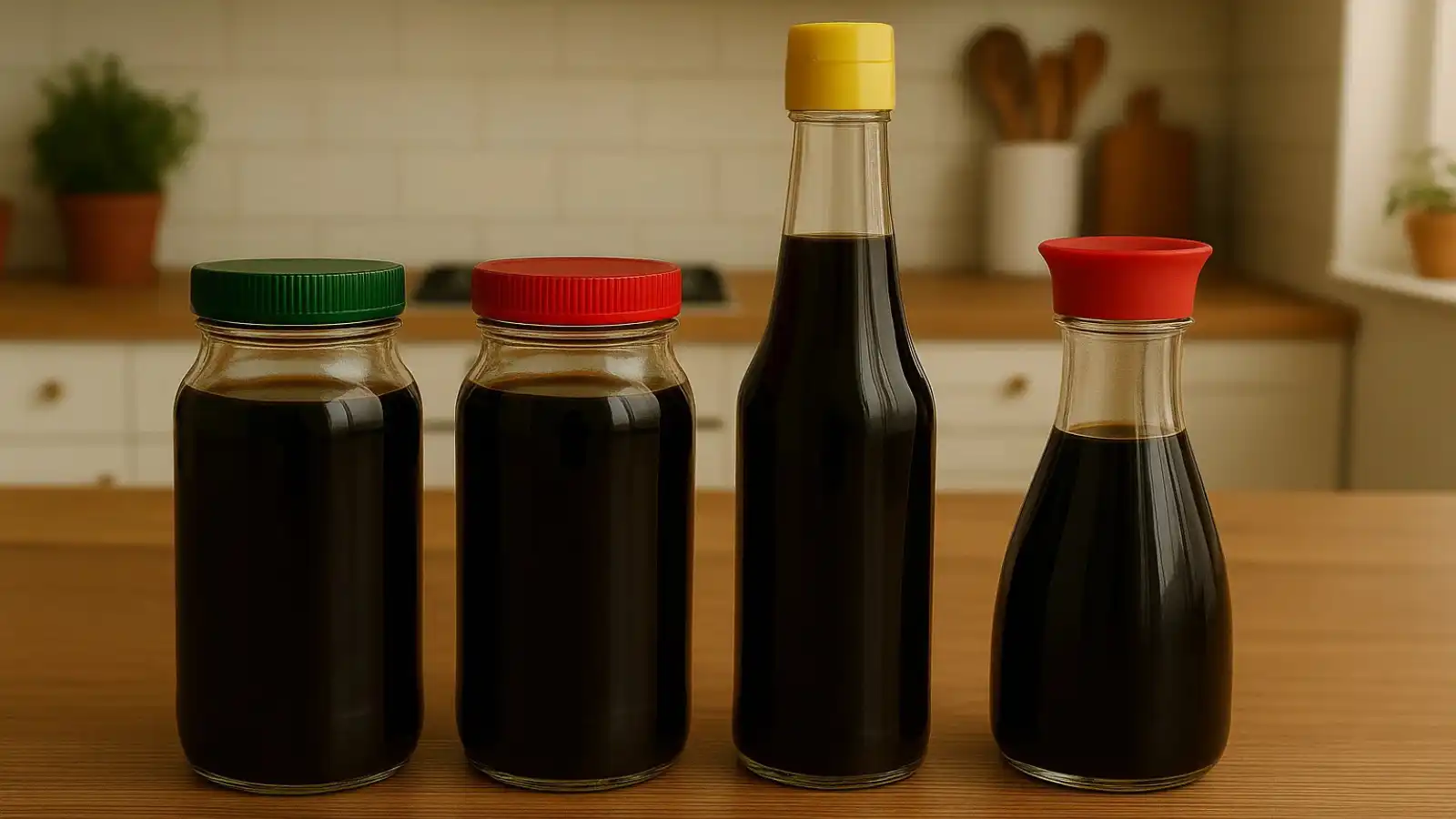Gluten free soy sauce wasn’t something I thought about—until it nearly ruined dinner. I was making a quick stir-fry, inspired by a boom boom sauce I’d picked up in Austin. Just as I reached for the soy sauce, I flipped the label and saw it: wheat.
My guest had celiac disease.
Thankfully, no reaction—but that moment changed how I cook. I checked every sauce in my kitchen. That same night, I mixed tamari, garlic, and molasses into a homemade gluten free soy sauce. It was bold, safe, and full of flavor.
Now, every sauce I create, like my cajun cream, is made with everyone at the table in mind.
Print
Gluten Free Soy Sauce – A Tasty & Safe Choice for All
- Total Time: 7 minutes
- Yield: About ¾ cup 1x
- Diet: Gluten Free
Description
This easy gluten free soy sauce recipe is mellow, quick, and naturally soy-free. Made with coconut aminos, a splash of vinegar, and pantry spices, it’s the perfect substitute when you need something safe, flavorful, and fast. I use this all the time when cooking for gluten-sensitive friends—it always does the trick.
Ingredients
-
½ cup coconut aminos
-
2 tablespoons water
-
½ teaspoon apple cider vinegar
-
½ teaspoon molasses
-
¼ teaspoon garlic powder
-
Pinch of ground ginger
-
Salt, if needed
Instructions
-
Add everything to a small saucepan.
-
Stir and heat over medium-low.
-
Once it starts to simmer, let it go for 3–5 minutes.
-
Taste and add salt if you want it bolder.
-
Cool, then pour into a jar or bottle.
-
Store in the fridge for up to 10 days.
Notes
-
Naturally gluten- and soy-free—perfect for celiacs and soy allergies.
-
Add smoked paprika for a deeper flavor.
-
I often double the batch and freeze half in a small jar.
-
Great with spicy dishes, stir-fries, or anything that needs a boost of umami.
- Prep Time: 2 minutes
- Cook Time: 5 minutes
- Category: Sauce
- Method: Simmer
- Cuisine: Gluten-Free
Nutrition
- Serving Size: 1 tablespoon
- Calories: 10
- Sugar: 0.5g
- Sodium: 150mg
- Fat: 0g
- Saturated Fat: 0mg
- Unsaturated Fat: 0g
- Trans Fat: 0g
- Carbohydrates: 1.5g
- Fiber: 0g
- Protein: 0g
- Cholesterol: 0mg
Table of Contents
What Makes a Soy Sauce Gluten-Free
Reading Labels & Understanding Ingredients
Let’s be honest—most of us didn’t grow up reading soy sauce labels. I certainly didn’t. I thought it was just soybeans, salt, and magic. Turns out, wheat is a major ingredient in most traditional brands. For someone with celiac disease or even mild gluten sensitivity, that tiny splash of soy sauce can be a big deal.
That’s where a true gluten free soy sauce comes in. These versions skip wheat altogether. Some are made with extra soybeans, others swap in rice. But here’s the trick: not all “gluten-free” soy sauce is actually gluten-free unless it’s clearly labeled that way. Even tamari—often considered the go-to—can include wheat if you’re not careful.
Now, I keep a bottle of certified gluten free soy sauce in my kitchen and often one in my bag when I go out. It’s small, but it means peace of mind. I’ve even used it in sauces like this rich unagi glaze or when revamping fast-food classics like Big Mac sauce.
Homemade Gluten Free Soy Sauce Recipe
When I want something lighter—or when soy just isn’t on the table—this is the version I turn to. It’s my favorite quick fix for a gluten free soy sauce that’s both simple and satisfying. Plus, it comes together fast with pantry ingredients.
Ingredients:
- ½ cup coconut aminos
- 2 tablespoons water
- ½ teaspoon apple cider vinegar
- ½ teaspoon molasses
- ¼ teaspoon garlic powder
- Pinch of ground ginger
- Salt, if you feel it needs it

Instructions:
- Pour everything into a small saucepan. No need to overthink it.
- Stir it up and set it on medium-low heat.
- Once it starts bubbling gently, let it cook for about 3–5 minutes.
- Give it a quick taste. If it needs salt, add a bit.

- Let it cool down, then store it in a jar. Your homemade gluten free soy sauce is fridge-ready for up to 10 days.
Kitchen Notes:
- This one’s mild, with a little sweetness, so it works great in spicier recipes—like mango habanero wings or even over roasted veggies.
- Want a bolder kick? A dash of smoked paprika does the trick.
- I usually make a double batch, then freeze half in small jars. That way, I always have some gluten free soy sauce ready when dinner needs saving.
Best Gluten-Free Soy Sauce Brands
What I Keep in My Kitchen (and Why)
Over the years, I’ve tried just about every gluten free soy sauce I could find. Some were too salty, some too bland—but a few really stood out. Now I keep three main ones on rotation, depending on what I’m cooking.
When I’m making a creamy dipping sauce or something bold like boom boom sauce, I’ll go for something richer like tamari. But if it’s a quick stir-fry or a soy-based dressing, I love the balance of a thinner, more classic soy sauce. And for my friends who avoid soy altogether? Coconut aminos to the rescue.
Here’s how they stack up side by side:
Gluten-Free Soy Sauce Brand Comparison
| Brand | Main Base | Flavor Profile | Certified Gluten-Free |
|---|---|---|---|
| San-J Tamari (Low Sodium) | Soybeans | Deep umami, slightly less salty | Yes |
| Kikkoman Gluten-Free Soy Sauce | Soybeans + rice | Classic soy flavor, lighter texture | Yes |
| Coconut Secret Coconut Aminos | Coconut sap | Slightly sweet, soy-free alternative | Yes |
Which One for What?
I use San-J tamari when I want a bold, deep flavor—like in marinades or dishes that need a solid umami base. It’s especially good in creamy sauces where you want richness without overpowering salt. It plays really well with something tangy like my lemon pepper sauce.
Kikkoman’s gluten free soy sauce is what I grab when I want that familiar soy snap. It blends easily into salad dressings, light sauces, or anything where texture matters. I use this one most when a recipe calls for regular soy sauce but I need a gluten-free switch.
Then there’s Coconut Secret. It’s not technically a soy sauce, but it works so well I use it like one. It’s a little sweet, totally soy-free, and pairs beautifully with spicy or citrusy flavors. When I make my coconut aminos DIY version of gluten free soy sauce, this is what inspired it.
Each one brings something different to the table. Once you know how they taste, you can match them to whatever dish you’re making—and you’ll never miss the wheat-based version again.
FAQ: Real Questions, Simple Answers
What kind of soy sauce is gluten-free?
The kind that doesn’t have wheat. Most soy sauces actually do—and that surprised me the first time I checked. Now, I only use ones that say “gluten-free” right on the bottle. If it’s not clear, I won’t risk it. Kikkoman makes a gluten-free version, and so does San-J. They both taste great and don’t leave anyone out at the table.
What’s a good alternative to soy sauce for celiacs?
Coconut aminos. It’s not soy, it’s not wheat, and it still adds that salty, savory thing we all want in sauces. I always have a bottle in the pantry, and honestly? I reach for it even when no one’s gluten-free. It’s that good.
What’s the difference between tamari and gluten-free soy sauce?
Tamari’s thicker and deeper in flavor. It’s usually gluten-free, but not always, so you have to check. Gluten-free soy sauce is brewed to match regular soy sauce, just without wheat. I switch between the two depending on what I’m cooking.
Is Kikkoman gluten free soy sauce celiac safe?
Yes—if it says “gluten-free” on the front. Kikkoman makes a few different kinds, so you have to be sure you grab the right one. I’ve used their gluten-free soy sauce for friends with celiac, and it’s always been fine.
Final Thoughts from My Sauce-Stained Apron
Gluten free soy sauce was one of the first ingredients that made me pause when I started paying attention to labels. I’d used soy sauce for years without ever thinking about what was in it. But once I learned it often contains wheat, it changed how I cook—and how I read every bottle on my shelf.
When I started learning about what was (and wasn’t) gluten-free, soy sauce honestly surprised me. I’d been using it forever without checking the label. But the more I learned, the more confident I got—and now I make better sauces than ever.
Switching to gluten free soy sauce didn’t slow me down. It opened new flavors. New habits. Even new recipes I never expected to love.
If you’ve read this far, you probably care about what you feed the people around you. That’s what sauce is about—it brings things together. It makes everything feel intentional.
So whether you’re pouring from a San-J bottle, mixing up your own, or stashing coconut aminos in your purse like I do sometimes… keep going. Stir things up.
You’ve got this.

